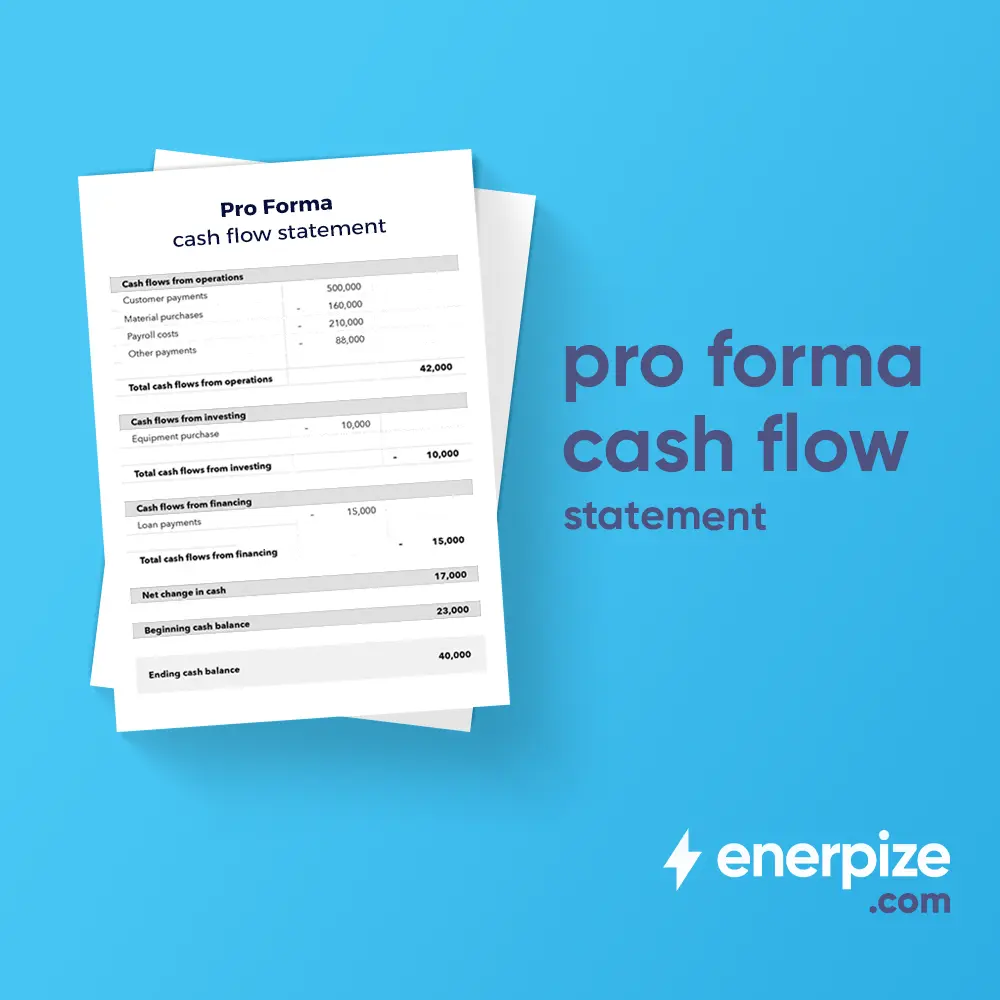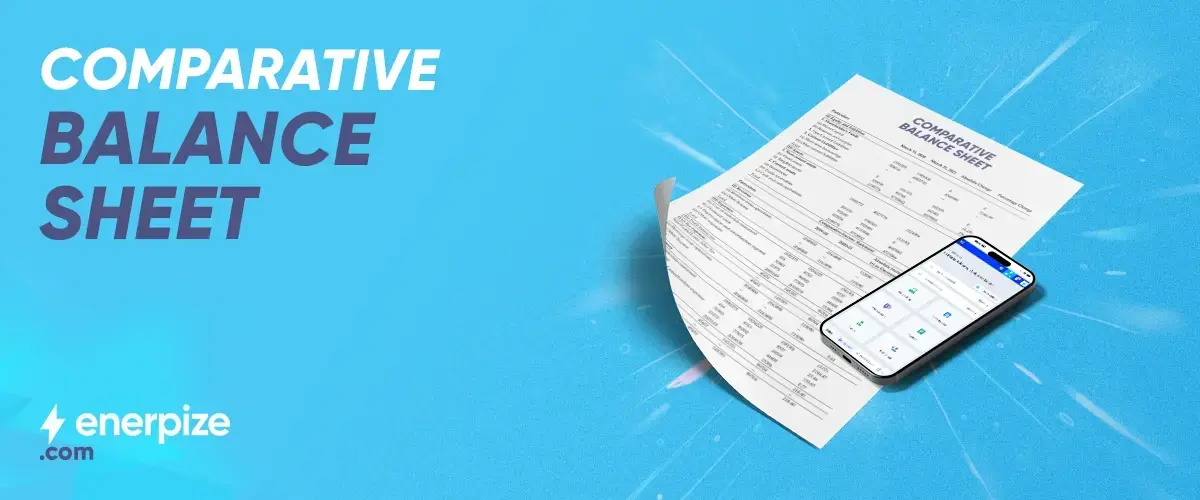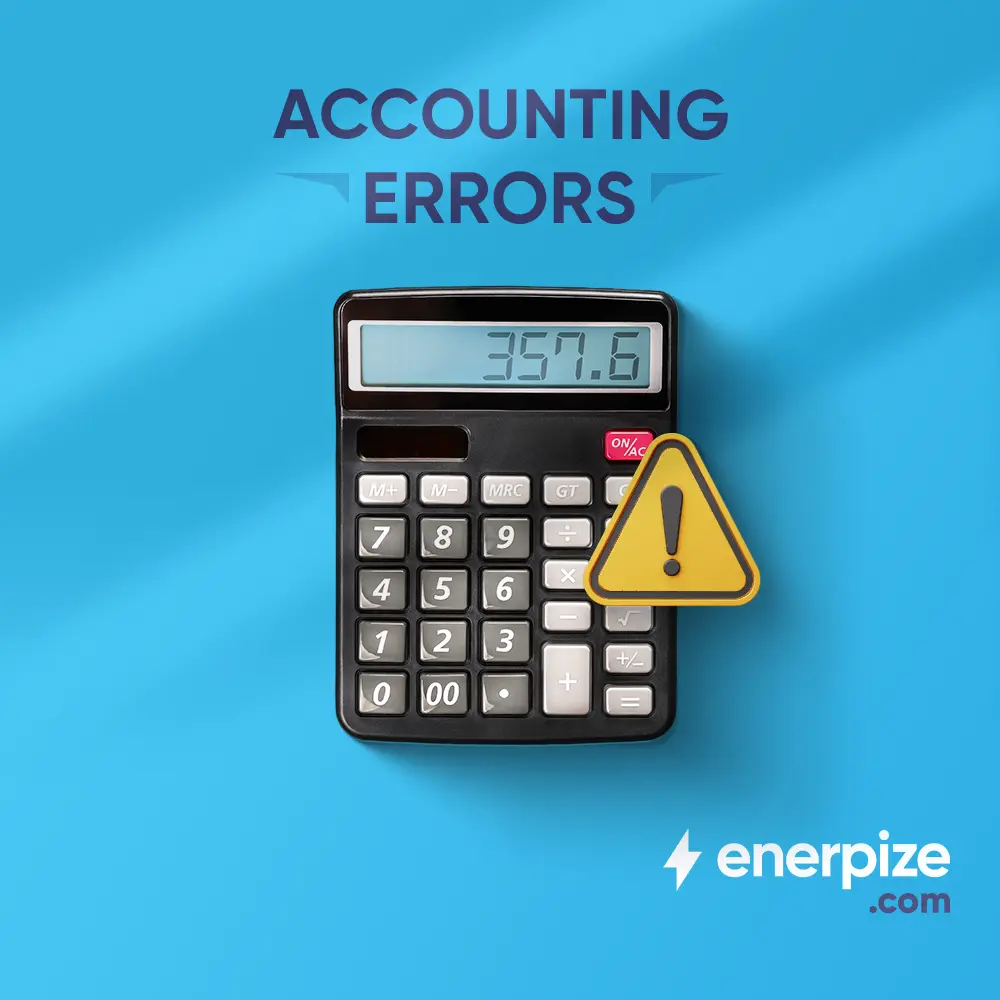Create and send online quotations and invoices, track sales, monitor staff performance, and sell & sync all your products via our POS and more.
Author : Haya Assem
Reviewed By : Enerpize Team
Single Entry VS Double Entry Accounting: A Comprehensive Guide
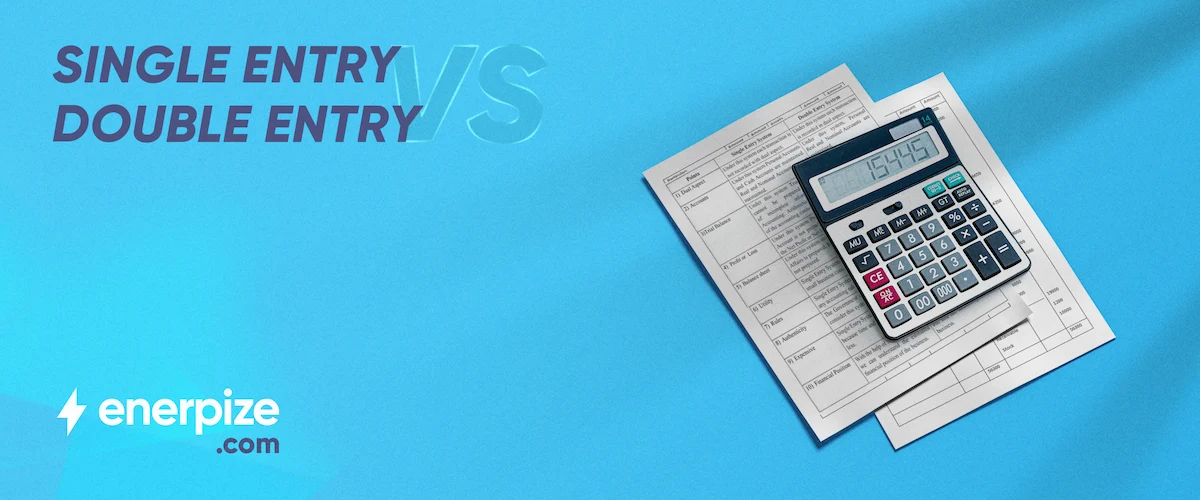
Table of contents:
- What is Single Entry Accounting?
- How Does Single Entry Bookkeeping Work?
- What is Double Entry Accounting?
- How Does Double Entry Bookkeeping Work?
- Single Entry VS Double Entry Accounting Main Differences
- Is double-entry bookkeeping better Than single-entry bookkeeping?
- How Enerpize Can Help You In Entries?
The key to successful business finance management is choosing an accounting method that suits your business size and needs. The most common systems are "Single Entry" and "Double Entry" bookkeeping.
To decide which is better for a business, you must first determine if you are operating a small or large organization. Understanding the distinctions between double entry vs single entry approaches can assist you in selecting the best one for your needs. In this guide, we'll explain how each system works, what differentiates them, and which could be the best match for your business.
What is Single Entry Accounting?
Single entry accounting is a basic form of bookkeeping where each financial transaction is recorded once. It typically tracks cash inflows (income) and cash outflows (expenses), along with maintaining a running total of the balance.
Small businesses or individuals with simple financial transactions often use this system. It’s easy to manage but provides limited insight into the business's overall financial health, as it mainly focuses on cash flow rather than detailed financial reports.
How Does Single Entry Bookkeeping Work?
Single-entry accounting involves recording financial transactions in a simple cash book or journal. This journal captures key transaction details such as the date, description, and whether the transaction is classified as income or expense. The final column reflects the updated balance, showing the running total of cash on hand after each transaction. This straightforward system primarily focuses on cash flow, making it ideal for small businesses or individuals with basic financial needs.
Single Entry Bookkeeping Example
The following example shows how a small business’s financial transactions would be recorded in a single-entry system over a day:
| Date | Description | Income | Expense | Balance |
| 5/5/2024 | Service Revenue | $1,000 | — | $1,000 |
| 5/5/2024 | Office Supplies Purchase | — | $200 | $800 |
| 5/5/2024 | Client Payment Received | $500 | — | $1,300 |
| 5/5/2024 | Rent Payment | — | $600 | $700 |
| 5/5/2024 | Utilities | — | $150 | $550 |
| 5/5/2024 | Miscellaneous Income | $100 | — | $650 |
This business’s working day started with $1,000 in service revenue. It then spent $200 on office supplies, decreasing the balance to $800. Later, a $500 client payment was received, bringing the total to $1,300. After paying $600 in rent, the balance dropped to $700, and a $150 utility payment brought it down to $550. Finally, the business earned $100 in miscellaneous income, leaving the day’s final balance at $650.
Read More: What are Journal Entries in Accounting
What is Double Entry Accounting?
Double entry accounting is a system that records every financial transaction twice to maintain a balanced ledger. For each transaction, one account is debited, and another is credited with the same amount.
This method is based on the accounting equation, Assets = Liabilities + Equity, and helps businesses maintain accuracy and accountability in their financial records. The key principle is that the total of all debits must always equal the total of all credits, which prevents errors and makes it easier to track financial health.
How Does Double Entry Bookkeeping Work?
Two Accounts for Every Transaction: Each transaction affects two or more accounts. One account is debited, while the other is credited. As mentioned in the past few lines, the double-entry system is based on the fundamental accounting equation:
Assets = Liabilities + Equity
Typically, credits increase revenue, liabilities, and owner equity, whereas debits increase assets and expenses. Double-entry accounting provides a more accurate complete financial picture of a business since it tracks both sides of each transaction.
A journal or book is considered balanced when the total debits and credits match each other, ensuring the accuracy of financial records. This system is essential for businesses with more complex financial operations as it provides a clearer picture of financial health and the ability to generate accurate financial statements.
Double Entry Accounting Example
A business purchases $10,000 worth of inventory, pays $4,000 in cash, borrows $5,000 through a loan, and receives a 10% discount on the total purchase.
| Date | Account | Debit | Credit |
| 13/10/2024 | Inventory | $10,000 | |
| Cash | $4,000 | ||
| Loan Payable | $5,000 | ||
| Account Payable | $1,000 | ||
| Discount Received | $1,000 |
The business acquires $10,000 worth of inventory, which increases its assets. Therefore, the Inventory account is debited for the full amount. The business then pays $4,000 in cash, so the Cash account is credited to reflect this reduction in the business’s available cash.
It takes out a $5,000 loan to help pay for the inventory, increasing its liabilities. The Loan Payable account is credited by this amount. Due to the 10% discount, the business’s Accounts Payable liability decreases by $1,000. This is credited to reflect the reduction in what the business owes. The $1,000 discount is considered a form of income or a reduction in expenses, so the Discount Received account is credited.
Download Now: Free Double Entry Journal Template Excel & Word
Single Entry VS Double Entry Accounting: Main Differences
When deciding between single entry vs double entry bookkeeping, it's essential to understand how they differ in terms of complexity, accuracy, and suitability for various business sizes. These two methods have distinct approaches to recording financial transactions, each offering its own advantages depending on the needs of the business. Below is a comprehensive comparison between single-entry vs double-entry accounting to help you determine which system is better suited for your business:
- Single entry records each transaction once, whereas double entry records transactions twice (One account is debited and the other is credited).
- Single entry is a simple system that suits small businesses, while double entry is more complex so that it suits all business sizes.
- Single entry provides limited financial information about cash flow, whereas double entry provides comprehensive and more accurate financial information.
- Single entry does not support producing financial statements, while double entry provides detailed reports such as balance sheets, trial balances, and income statements.
- Single entry maintains only cash and personal accounts, whereas double entry records all types of accounts (assets, liabilities, equity, income, expenses).
- Single entry doesn’t follow standard accounting principles, whereas double entry adheres to these principles, ensuring accuracy and consistency in financial records.
- Single Entry lacks automated checks, making it more difficult to detect errors, whereas double entry balances accounts by default, allowing for faster error detection.
- Single Entry primarily focuses on income and expense, while Double Entry tracks a broader range of financial elements, including assets, liabilities, and equity.
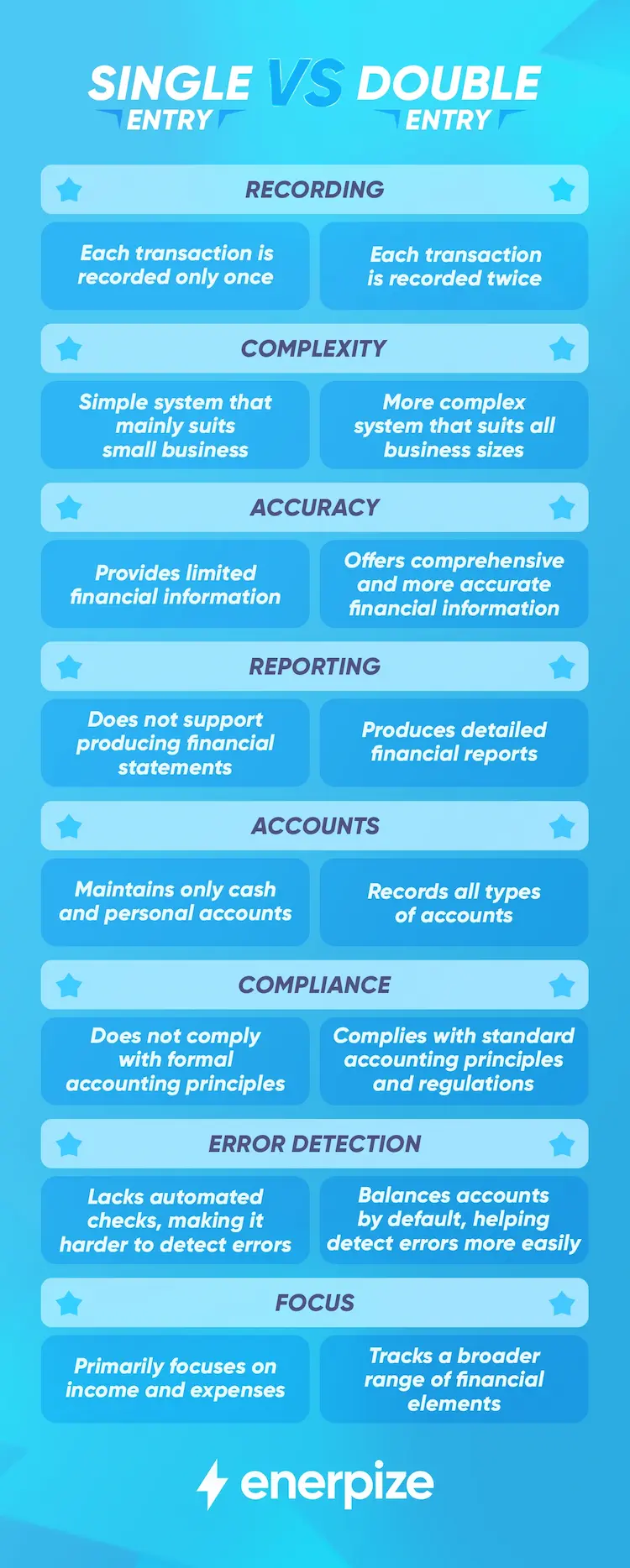
Is double-entry bookkeeping better Than single-entry bookkeeping?
Generally, yes, double-entry bookkeeping is considered a more robust system than single-entry bookkeeping. However, the choice between the two depends on your business's size and needs.
Small businesses with minimal financial activities may find single-entry accounting suitable since it is easier to manage and requires fewer bookkeeping skills. Businesses that have more complex activities and require comprehensive financial reporting may benefit from double-entry accounting's depth and accuracy.
Below are the key reasons why double-entry bookkeeping is often preferred:
Precision and Comprehensiveness
A double-entry system provides more accurate and comprehensive business financial records by tracking assets, liabilities, equity, income, and expenses, resulting in a complete overview of the company's financial status. The single entry provides financial information like income and expenses, which is insufficient to determine a company's financial situation.
Read Also: How To Track Business Expenses
Financial statements
Double-entry accounting supports generating critical financial statements such as balance sheets, income statements, and cash flow statements. Single-entry has limited ability to analyze business performance, therefore it cannot prepare financial statements.
Error and Fraud detection
Double-entry accounting has built-in checks and balances since total debits must always equal total credits. This allows early detection of faults and inconsistencies. Single-entry systems lack such checks, making it more difficult to detect errors or fraudulent activity.
Compliance and Reporting
Double-entry complies with accounting standards and regulations, making it necessary for businesses that need to file formal reports to tax authorities or investors. Single entry is generally unacceptable for regulatory compliance, especially for larger enterprises.
Scalability
Double-entry can handle the complexities of growing businesses, which may have multiple accounts to track. Single-entry is more suitable for very small businesses or personal finance.
Read Also:
Adjusting Journal Entries: Definition, Types, and Examples
Intercompany Transactions Journal Entries: Importance & Examples
How Enerpize Can Help You In Entries?
Enerpize simplifies bookkeeping by supporting both single-entry and double-entry accounting systems, providing tools to automate journal entries and reduce manual input. In the comparison of double entry vs single entry accounting, Enerpize’s customizable settings allow you to choose the method that best suits your business needs, whether you're managing a small operation or handling complex financial tasks.
Enerpize's online accounting software ensures accurate financial reporting by generating comprehensive statements such as balance sheets and income statements, while its error detection feature helps keep your records balanced and error-free. Additionally, the system adheres to accounting standards, making tax preparation and audits easier while keeping your financial data organized and up-to-date.
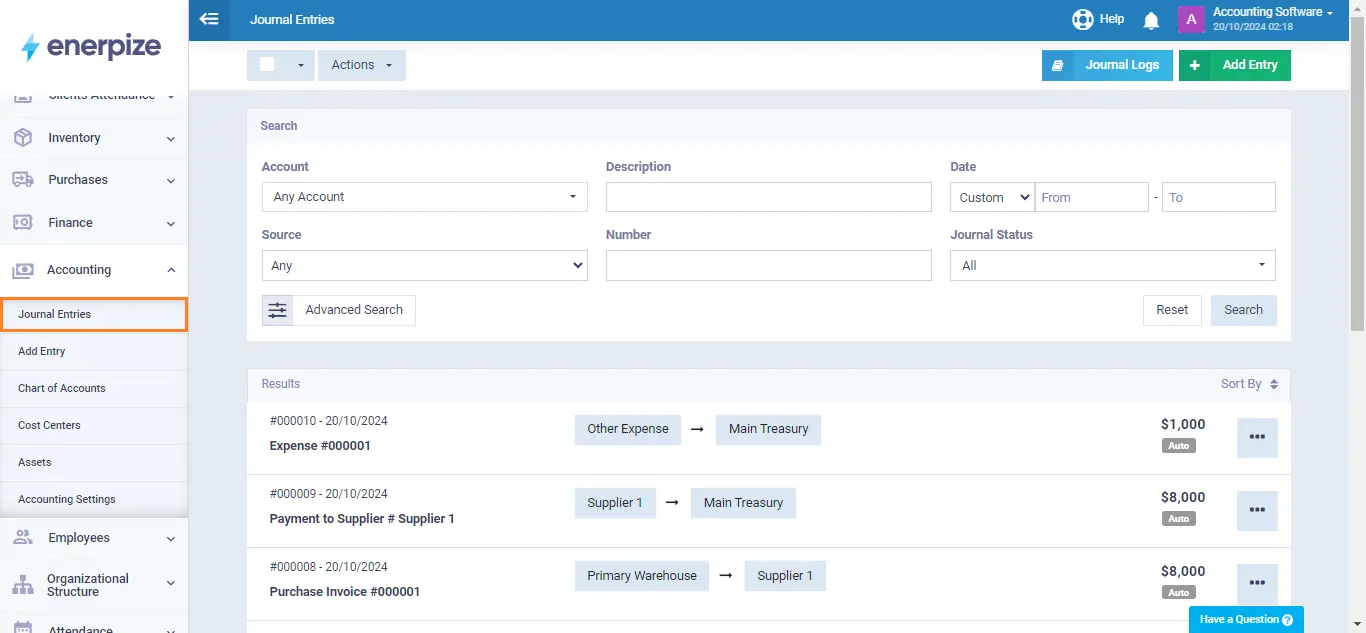
Entries bookkeeping is easy with Enerpize.
Try our accounting module to automate journal entries and ensure accurate financial reporting.


